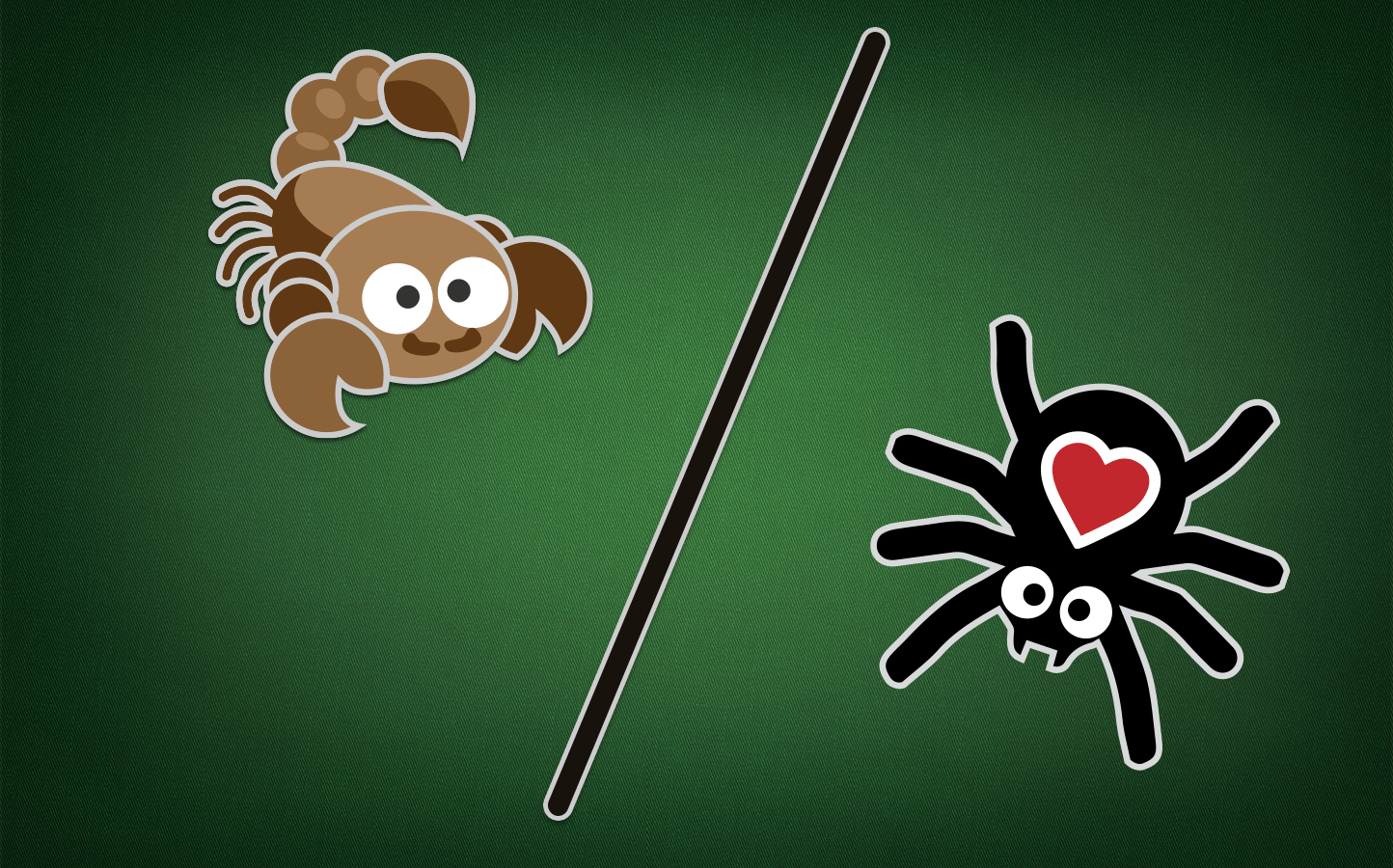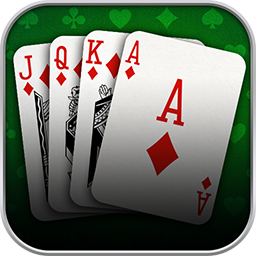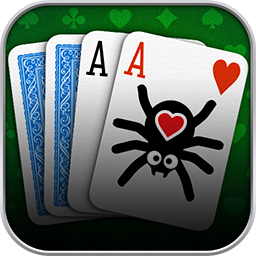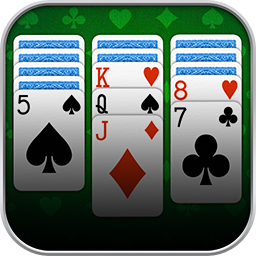If this is your first time hearing about Scorpion Solitaire, don’t worry. By the end of this lesson, you will be in the know! We shine a thorough light on the differences and similarities of Scorpion and Spider.
This topic has a place in the Spider School because you can select Scorpion as a game mode at the Spider Palace using a custom rule. That will automatically activate the custom rule Four Suits as well. You will find out the reasons behind it further below.
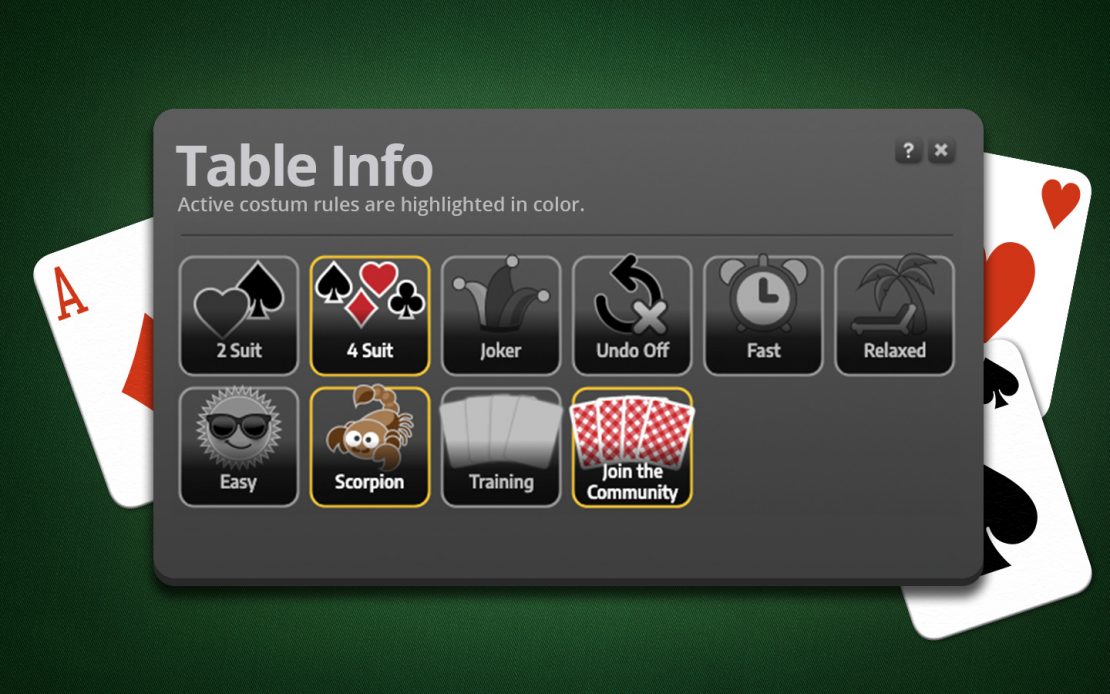
Similar: Stock and Foundation
The kinship with Spider Solitaire shows in the functionality of the stock and the foundation: As a player, you do not have a big say here. One card per tableau pile is dealt in one go from left to right. Thus, the placement of the drawn cards in the tableau is pretty random.
In both Solitaire variations, the foundation is merely the destination for your rows, sorted from King to Ace. Thus, the tableau is the main playing area in both game modes. And that is where significant differences start showing. We begin with the cornerstones.
Different Setup
Even before the round begins, you can observe a few obvious differences. Here they are all itemized:
| Spider | Scorpion |
| 104 cards (double deck) | 52 cards (one deck) |
| 1 suit* | 4 suits |
| 8 piles in the foundation | 4 piles in the foundation |
| 50 cards in the stock | 3 cards in the stock |
| 54 cards in the tableau in 10 piles (first 4 piles = 6 cards, last 6 piles= 5 cards) Only each top card revealed | 49 cards in the tableau 7 piles à 7 cards In the first 4 piles: bottom 3 cards face-downall other cards open |
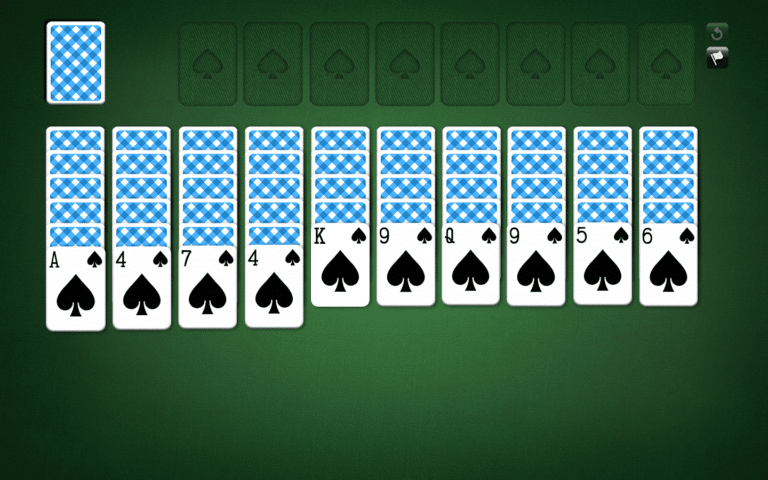
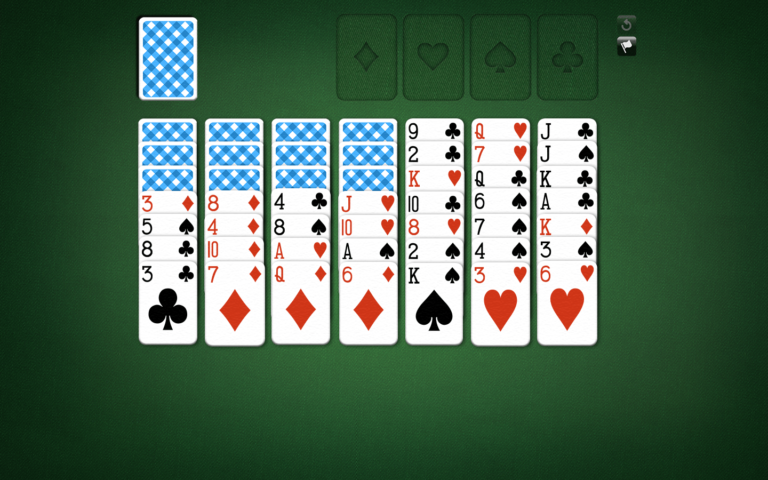
*You can play Spider Solitaire with two or even four suits, as well. Lessons on the topic will be available soon in our lesson overview.
Combining Cards in the Tableau
If you know Spider with more than one suit, you will notice another difference to Scorpion: In Spider mode, you are allowed to combine cards of alternating colors as long as the ranks match consecutively. But in Scorpion, you can only combine cards of the same suit!
Moving Multiple Cards in the Tableau
As long as the first card – as in the bottom card – of a moving pile matches the target card, you can move cards as you please in Scorpion. In contrast, you are only allowed to move several cards in Spider if every attached card follows the correct order from King to Ace.
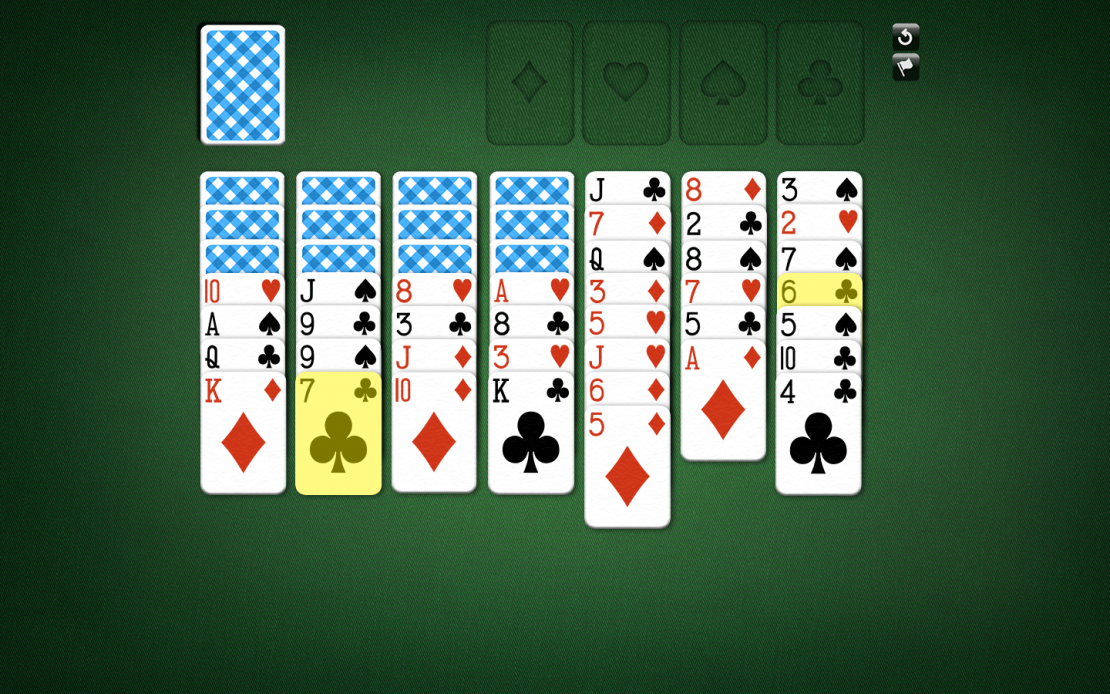
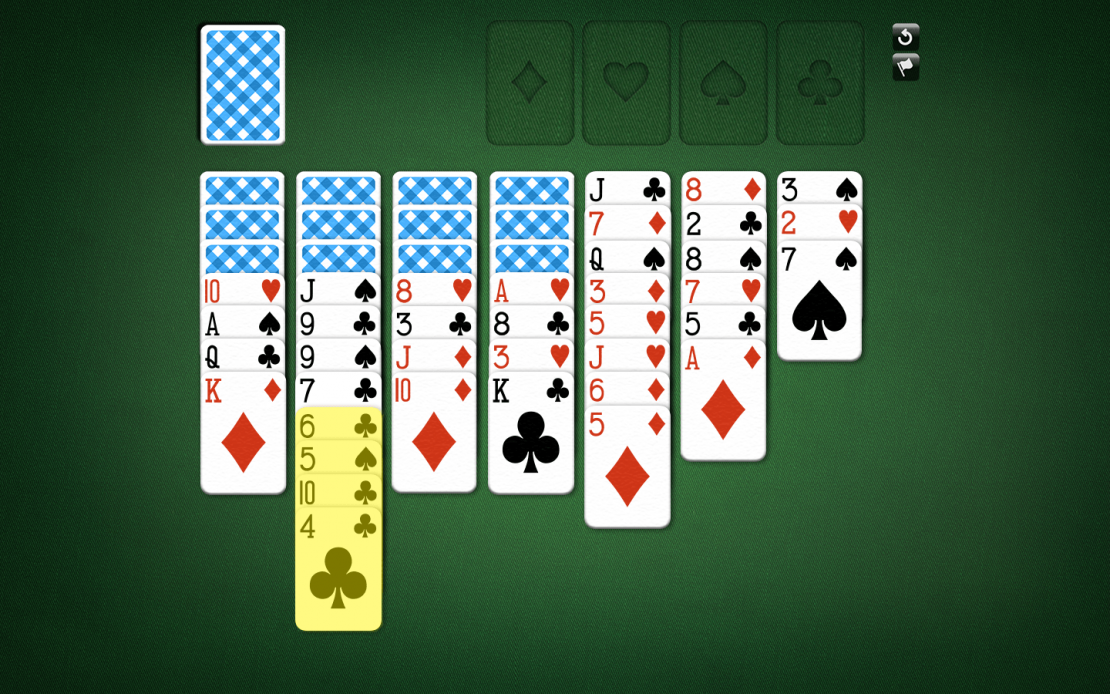
If you have played Scorpion before, you might have noticed that the differences in the tableau’s combination dynamics amount to an almost inverted sorting process.
Fine Tuning: Empty Stacks and Drawing From the Stock
You can request stock cards at any time when playing Scorpion – even if one or more tableau piles are empty. But you can only place a King card or a group of cards starting with a King on an empty field.
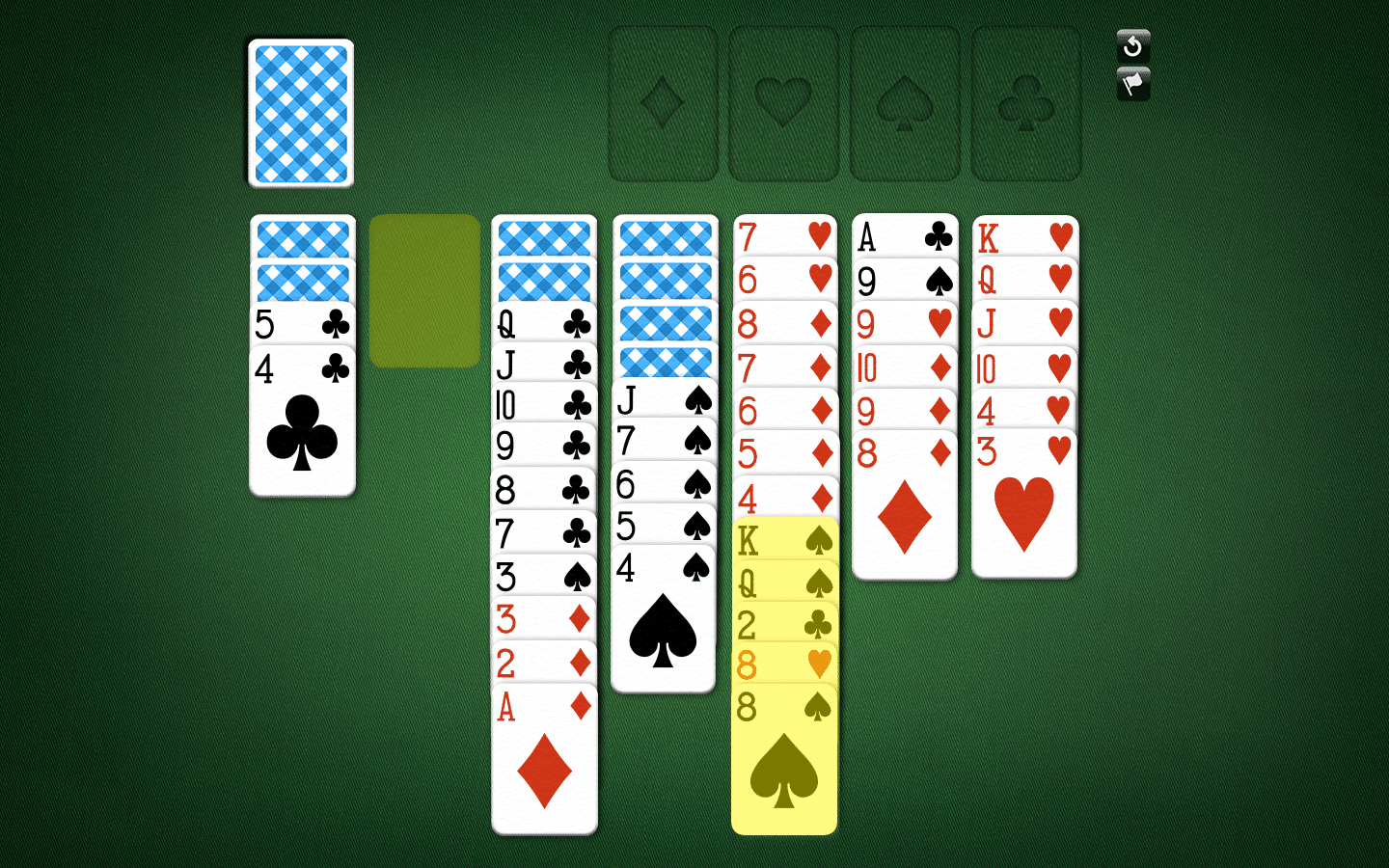
With only a few modifications, a Solitaire game requiring an entirely different approach emerges. Are you ready for that brain-teaser? Then go for a table with the custom rule Scorpion next time you play at the Spider Palace and get your grey cells going!
If you would like a brief summary, you can find it in the appropriate section of our Spider manual.
